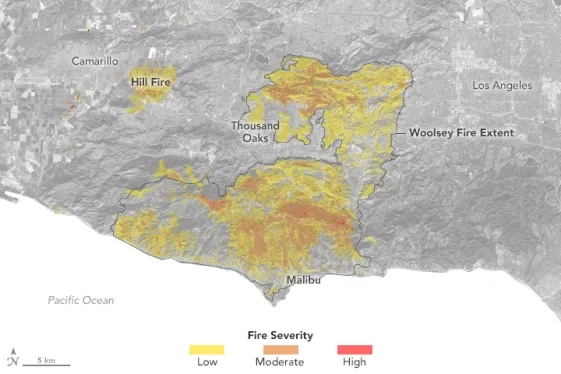On November 8, 2018, the Woolsey Fire broke out in Southern California and burned more than 95,000 acres. While the fire was burning, a NASA-funded project provided crucial satellite data to fire response agencies to swing into action.
NASA’s Rehabilitation Capability Convergence for Ecosystem Recover (RECOVER) system is an online mapping tool funded by NASA’s Applied Sciences Program. RECOVER pulls together data on 26 different variables like fire severity and extent. This reduces how long it takes fire managers to gather large amounts of important information. What once took several days or weeks now takes five minutes.
The rapid release of data was game-changing for fire managers. It allows them to start rehabilitation plans earlier and implement recovery efforts sooner.
One week after the Woolsey Fire ignited, RECOVER posted a burn severity map. This map helped fire managers determine the amount of damage caused by the fire.
The NASA team worked closely with fire managers to learn what information they needed most. “In almost every fire, managers need road, vegetation, topography, stems, and other geospatial data,” said Keith Weber, principal investigator of RECOVER.
RECOVER's data comes from sources like NASA’s Shuttle Radar Topography Mission. The data showed steep slopes around the area impacted by the Woolsey Fire. Slope is important because fires tend to burn faster as they move uphill and as slopes get steeper.
Steeper slopes mean “most of the vegetation is gone and post-fire conditions for a debris flow or landslide are a concern,” Weber said.
Since 2012, RECOVER has grown to over 150 users. RECOVER users include several state and local agencies.
More information available at the NASA Earth Observatory story Looking to RECOVER After the Fire.




